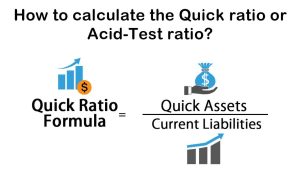The inventory turnover ratio, also recognized as stock turnover ratio, is just an indicator of how well inventory is handled. The inventory turnover ratio calculation is proportional to the COGS divided by gross or average inventory to determine how many times stock is “turned” or sold within a given period. The ratio will be utilized to calculate whether there is a surplus of stock in relation to revenue.
Inventory Turnover Ratio Formula

Inventory Turnover Ratio = Cost of goods sold / Average Inventory
The COGS is the cost related to the manufacture of goods sold by a business over a specific time span. A business’s cost of goods sold can be shown on its income statement.
The average inventory is the average amount of stocks for a given time span. It should be noted that an analyst will use either average or end-of-period stock prices.
Must Read – How To Calculate Inventory Turnover Ratio?
Inventory turnover ratio is a productivity ratio which assesses a business’s ability to handle its stock. It is crucial to maintain a strong turnover rate since higher turnover ratios lowers storage as well as other holding expenses. It is critical to evaluate the percentages of firms in the very same sector rather than businesses in various industries. Based on the product, the standard ratio varies significantly.
Low turnover indicates that a business’s earnings are poor, it has too much stock, or it has weak inventory control. Unsold inventory is vulnerable to retail price fluctuations and obsolescence.
Stocks can help assess a business’s liquidity vary by industry in which it works. Stock is one of the most important assets reported by retailers. If a retailer records a poor product turnover ratio, the stock could be redundant, leading to missed revenue and higher associated expenses.
Key points to remember
- Stock turnover ratio is a productivity ratio that assesses how well stock is handled.
- Since the ratio varies considerably based on the market, it can only be compared with firms that operate in the similar industry
- A high ratio is often advantageous since it means lower storage and other retention costs.
- A low ratio indicates sluggish revenue, surplus inventory, or ineffective inventory control.
- The ratio could be utilized to calculate a business’s liquidity based on the market



